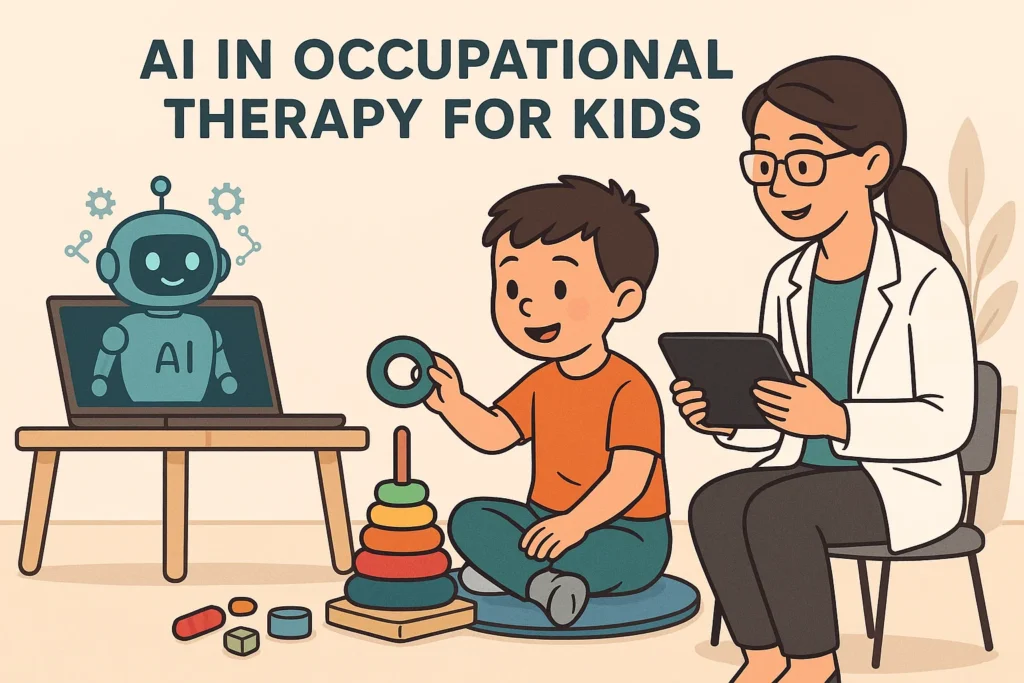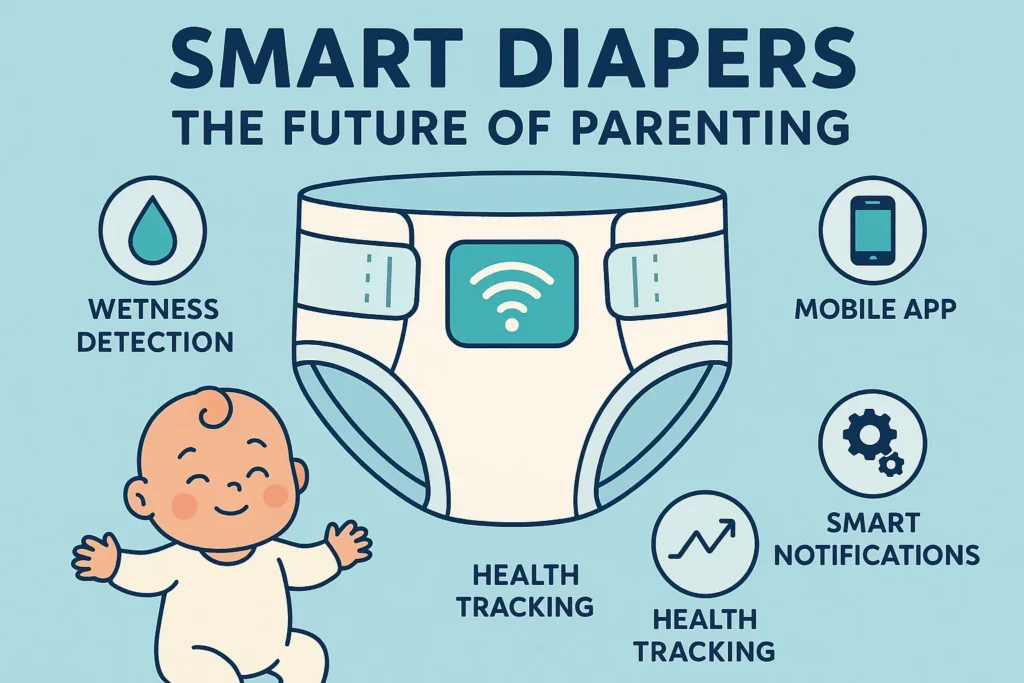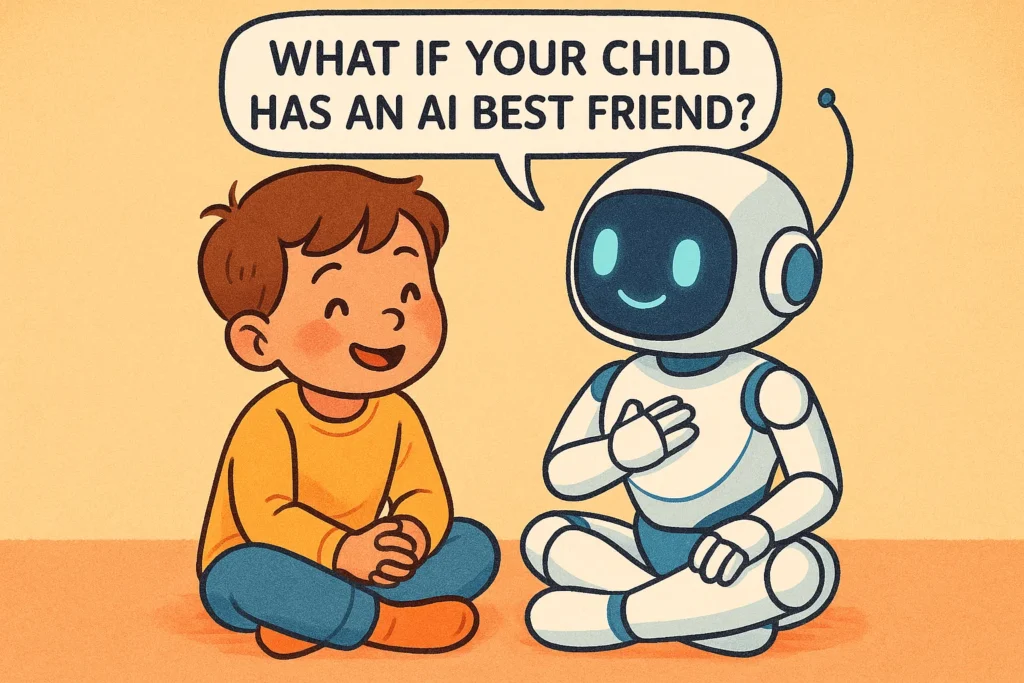🌟 Introduction
At AiBlogQuest.com, we explore how artificial intelligence is changing the world for the better — especially for children with developmental needs. One of the most exciting areas is AI in occupational therapy for kids, where advanced technology helps children build essential life skills, improve motor coordination, and gain independence faster than ever before.
AI isn’t replacing therapists — it’s empowering them with real-time data, insights, and interactive tools that make therapy sessions more engaging, measurable, and effective.
🧠 What Is Occupational Therapy for Kids?
Occupational therapy (OT) focuses on helping children develop the physical, cognitive, and emotional skills they need for daily life — from writing and dressing to playing and communicating.
Children with conditions such as autism, ADHD, sensory processing disorder, or developmental delays often need personalized interventions. That’s where AI-powered occupational therapy comes in.
🤖 How AI Is Enhancing Occupational Therapy
1. 🧩 Personalized Therapy Programs
AI algorithms can analyze a child’s performance and create customized therapy plans that adjust dynamically as the child progresses. This reduces trial-and-error and ensures every session is optimized for growth.
2. 🎮 Gamified Therapy Sessions
AI-driven games and virtual simulations make exercises fun while tracking improvement in motor skills, attention span, and problem-solving ability. These gamified tools motivate children to engage more willingly in therapy.
3. 🖐️ Motion Tracking and Gesture Recognition
Using AI-powered sensors and cameras, therapists can monitor a child’s hand movements, posture, and coordination — even remotely. This allows for detailed analysis without overwhelming the child.
4. 📊 Real-Time Progress Tracking
AI systems collect and visualize data from every therapy session, helping therapists and parents see measurable progress and adjust interventions instantly.
5. 🗣️ Speech and Cognitive Support
Some AI tools integrate speech recognition and cognitive analysis, supporting children who struggle with communication or focus during occupational therapy.
6. 🏠 Remote Therapy and Accessibility
Through AI-driven telehealth platforms, occupational therapy can now reach children in rural or underserved areas — ensuring access to care regardless of location.
🌈 Real-World Examples
-
AI motion sensors track fine and gross motor skill development.
-
Smart tablets with adaptive games adjust tasks based on a child’s mood and energy level.
-
AI chat companions provide verbal feedback and encouragement during therapy.
These innovations make therapy more child-friendly and data-driven, improving both engagement and outcomes.
⚖️ Benefits and Challenges
Benefits:
-
Tailored, data-backed interventions
-
Increased motivation through interactive tools
-
Continuous feedback for therapists and parents
-
Accessibility via remote therapy
Challenges:
-
Cost of advanced AI systems
-
Privacy concerns regarding health data
-
Need for human oversight to ensure emotional connection
AI should augment, not replace the therapist’s empathy and human touch — the most vital part of helping children thrive.
🚀 The Future of AI in Occupational Therapy for Kids
The next generation of AI in occupational therapy for kids will include wearable sensors, AI-powered virtual assistants, and emotion-recognition software to track not only performance but also motivation and stress levels.
As technology evolves, children with developmental challenges will receive faster, more precise, and more compassionate care — supported by AI and guided by human understanding.
🔗 Useful Links – AiBlogQuest.com
-
AI for Identifying Learning Disabilities Early
-
AI in Phonics and Spelling Practice
❓ FAQ
Q1: Can AI replace human occupational therapists?
No. AI assists therapists by analyzing data and providing insights, but human empathy, observation, and adaptability remain irreplaceable.
Q2: Are AI tools safe for children?
Yes, most are designed with strict privacy standards and child-friendly interfaces to ensure safe learning environments.
Q3: What skills can AI help improve in therapy?
AI supports the development of fine motor skills, attention, communication, problem-solving, and self-care habits.



